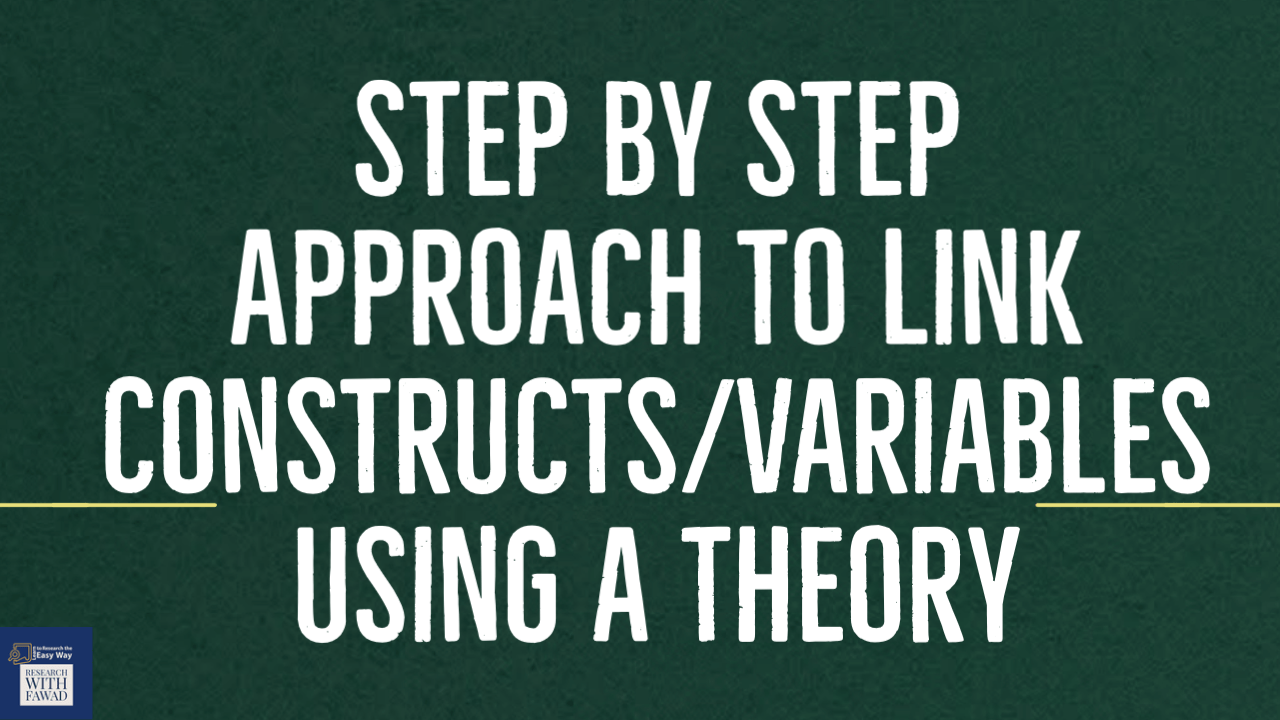How to Develop relationship between variables using a theory?
What is it All About?
The session focuses on a step by step approach to develop linkage/relationship between two concepts based on a theory in a research study.
Theory: What it is, How to Search and Where to Write about the Theory?
How to use Google Scholar to Search Literature
Session 1.
Session 2.

Learn How to Develop relationship between variables using a theory
The tutorial is a step by step guide on how to develop relationship between different concepts in a literature review based on a theory.
Do Like and Share the Video
Example
- For Instance, I am interested in establishing the relationship between Sustainable Leadership and Project Success. There is no research that has linked the two concepts
allintitle:”Sustainable Leadership” (“Project Success” OR “Project Performance”)
The Process
- Step 1: Identify the Theory that can be Used?
- Step 2: Identify the Key traits/Characteristics/elements of the Theory
- Step 3: Identify the Key traits /Characteristics/elements of the two concepts from the conceptualization (Definition)/Literature.
- Step 4: Link the constructs (IV or DV) based on their key characteristics with the identified traits of the theory.
The Sample Write-Up
Step 1: Mention the theory
Example: The relationship between Sustainable Leadership and Project success can be explained in light of the resource-based view.
Step 2: Describe the Theory – Make sure that the description uses the words that are later used to link the two concepts.
Example: The central proposition of RBV is that, for a firm to achieve competitive advantage and performance it must acquire and control valuable, rare, inimitable, , and non-substitutable resources and capabilities.
Step 3: Link the theory with the concepts based on the Identified traits /Characteristics/elements
Project Success in this example is the performance outcome of the business, hence, we try to establish that leadership, in particular sustainable leadership is a valuable, rare, inimitable, , and non-substitutable resource/capability. To do so, we will need literature support.
allintext:”Sustainable Leadership” (valuable OR rare OR inimitable OR resource OR capability)
Example: Leadership in general has been identified as a rare and inimitable capability of the organization (Barney, 2001). Sustainable leadership has been identified as a critical resource for any organization (Iqbal & Ahmad, 2021).
Step 4: Is there any link of RBV in existing research with the concepts in the study.
allintext:”Project Success” “Resource Based View”
Example: The RBV perspective is also important to project-based performance management, as it focuses on the use and deployment of a firm’s resources and development of strategic assets for achieving a competitive advantage (Cullent & Parker, 2015).
Step 5: Complete the Link
Example: Hence, based on RBV, it can be argued that sustainable leadership can help make organizations attain improve project success.
Complete Write-Up
The relationship between Sustainable Leadership and Project success can be explained in light of the resource-based view. The central proposition of RBV is that, for a firm to achieve competitive advantage and performance it must acquire and control valuable, rare, inimitable, , and non-substitutable resources and capabilities. Leadership in general has been identified as a rare and inimitable capability of the organization (Barney, 2001). Sustainable leadership has been identified as a critical resource for any organization (Iqbal & Ahmad, 2021). The RBV perspective is also important to project-based performance management, as it focuses on the use and deployment of a firm’s resources and development of strategic assets for achieving a competitive advantage (Cullent & Parker, 2015). Hence, based on RBV, it can be argued that sustainable leadership can help make organizations attain improve project success.
Video Tutorial
Additional Resources
- A Practical Example of Writing and Formatting the Literature Review
- From Literature to Research Problem, Objectives and Questions
- How to Avoid Plagiarism?
- How to Read a Research Paper and Store Critical Information
- How to Use Google Scholar for Literature Review
- How to Use QDA Miner Lite for Searching Literature
- How to Use Scholarcy and Google Tall to Books to Extract Literature
- How to Write the Literature Review
- Theoretical vs Conceptual Framework – Different, Similar, or Complimentary
- Using Mendeley for Literature Search